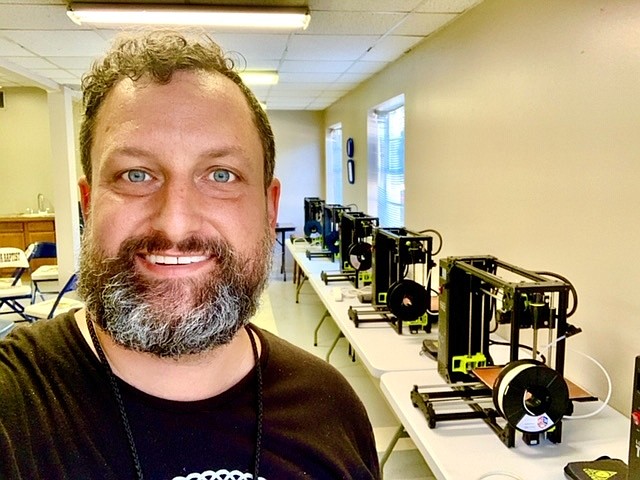- April 2, 2025
-
-
Loading

It's not only companies that are rising to meet manufacturing demands of the coronavirus crisis. Volunteers are doing it too, and some are using businesslike principles, including a focus on efficiency and maximizing production.
One such effort in Tampa Bay, dubbed MRG 3D, uses 3D printers to make face shields for area medical professionals and first responders.
First, Tampa resident Lorri Brown wanted to use 3D printers to provide medical supplies for people on the front line. Other volunteers quickly joined in to help, including Tim Keeports, president of the Old Seminole Heights Neighborhood Association, and Michael Guinn, a biomedical engineer and subject matter expert in 3D printing for the U.S. Department of Defense. Christ Fellowship Church in Seminole Heights provides volunteers and raises funds.
When Guinn heard about the project, he wasted little time. “I said: ‘I’m ready to go. Let’s make this happen,’” he says. “‘If we’re going to do this, time is of the essence.’ We met a couple hours later.”
‘Our main focus and drive is to make sure the people who are taking care of us are taken care of.’ — Michael Guinn, MRG 3D
Guinn chose an open-source file for 3D printing a face shield and modified it to reduce printing time and use less plastic. He also provided 14 3D printers. “By the next morning, I was already setting up printers and printing,” he says.
A group of 12 volunteers helps produce the shields. The group is small by design to minimize exposure and includes an undergraduate engineering student, someone planning to attend medical school and a university administrator. Most volunteers come in three or four times a week for at least six to eight hours at a time.
As part of the project, Guinn also established a network of 80 3D printers making shields in places including Sarasota, Tampa and Ocala. The network includes Sarasota-based Sweet Sparkman Architecture and Interiors. "To maximize output, we’re helping connect and mobilize as many remote 3D printers as possible," firm partner Todd Sweet says in a statement. Those volunteers drop off their shield parts and Guinn’s team of volunteers in Seminole Heights handles assembly and packaging.
The shields are given for free to medical professionals at area hospitals in Tampa Bay, Sarasota, Manatee, Lakewood Ranch and beyond. The project relies on donations from the community. So far that has amounted to about $24,000, including in-kind donations, Guinn says.
Now it’s been more than a month of printing, going 24/7. That’s the biggest challenge — making as many shields as they can each day. “I’m living at the lab,” Guinn says. “I have a cot in the corner. I telework during the day, but I check the prints and then keep working all night.”
At the lab run by Guinn, volunteers make 500 to 600 shields a day. The network of additional volunteers he has assembled makes about 50 shields a day. And demand remains high: They receive more than 6,000 requests for shields a week.
Every day, Guinn has worked to improve the project’s efficiency. The team, for example, is on version nine of his design and settings. At first, it took four-and-a-half hours to print two shields. Now they print two in an hour and a half.
It’s not the most cost-effective way to make shields, he says, but it works because it’s done at a local scale and allows medical professionals in the area to get priority. A manufacturer elsewhere, on the other hand, might have to distribute shields to hospitals nationwide. “If we want to help out our own people, we have to do it on our own,” Guinn says. “Our main focus and drive is to make sure the people who are taking care of us are taken care of.”
Click the links below for more Made on the Gulf Coast stories.
Manufacturer of in-demand medical gear moves swiftly — with smarts
Manufacturer splits employees into two teams during pandemic, sees increased competition, motivation
Volunteer effort uses 3D printers to make face shields for area medical professionals